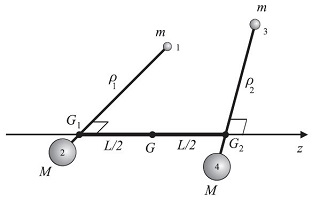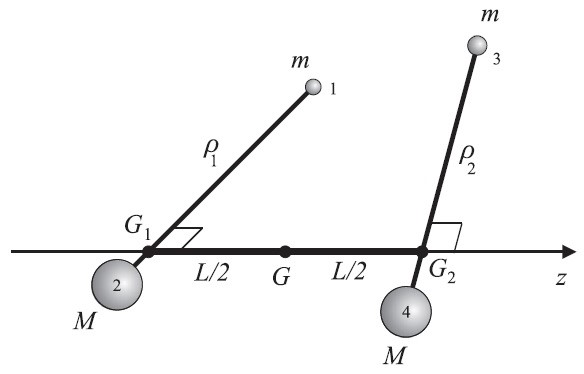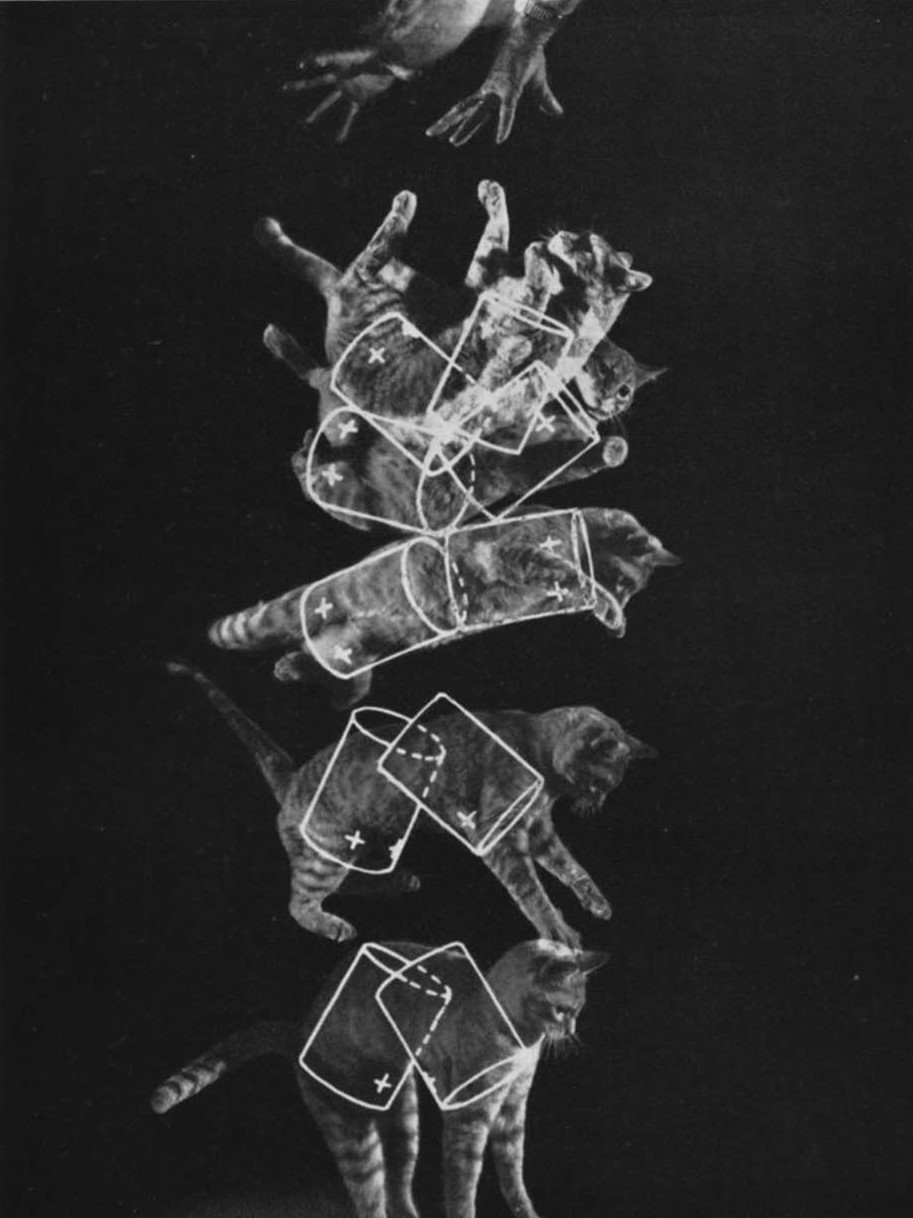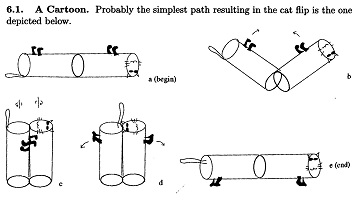Angular Momentum: Two Models and a Video
Linear momentum is what keeps an object in motion moving in that same direction absent an outside force. Angular momentum is what keeps a rotating object rotating in the same direction asent an outside torque. The motion of a free-falling cat's center of mass is fixed and the overall system has an angular momentum of zero, so how does the cat not only turn itself over but stop turning so that it lands on its feet? There are two dominant models for the cat-righting reflex: "legs in - legs out" and "tuck and turn".
Legs In - Legs Out


Some models for how cats right themselves focuses on the relative motion of the legs and how they can generate internal torques. The internal torques must be balanced if the total angular momentum is zero, so if one part of the cat's body turns to the left another part must turn towards the right. The above model, from a 2018 paper by Hanno Essen and Arne Nordmark in the European Journal of Physics, suggests that the front and back halves of a cat turn 180 degrees relative to each other by taking advantage of the fact that "non-zero bodies can perform zero angular momentum turns."
Tuck and Turn
Other models for how cats right themselves depicts cats as comprised of two rotating rigid cylinders attached at a single point in the middle of the cat's back. The connection point is a special "no-twist joint" so the count rights itselves through a series of bends: First forward 116 degrees, then to the side, then backward 26 degrees, then to the other side, and finally forward again.




As one researcher wrote, physicists are concerned with the "kinematic problem" of how cats right themselves and not the "dynamical problem", but that assumption can lead to some odd depictions of cats' movements that seem divorced from reality.
Slow Motion Flipping Cat Physics
Rocket test engineer Destin Sandlin examined flipping cat physics on his educational SmarterEveryDay channel and, with the aid of a high-speed camera, breaks down what a cat does to flip itself over while conserving its angular momentum. The observed dynamics inform the kinematics and show how cats right themselves using the same techniques that college students on a turntable use to control their spin during lab.
Key steps for turning yourself over in mid-air:
- Figure out which way is up using the ears or eyes.
- Divide body into two separate rotational axes tilted from one another with arched back (people have a hard time with this part).
- Pull front paws in to decrease moment of inertia and spin faster (the ice skater trick).
- Push back paws out to increase moment of inertia so that a large twist in the front equals a small twist in the back in the opposite direction. This balances out the torques.
- Once the front paws are underneath, push them out to increase their moment of inertia and stop the front twist.
- Extend back legs along rear axis to twist them around really fast
- Pull back legs underneath body.
- Extend all legs to stop all twisting and brace for landing.